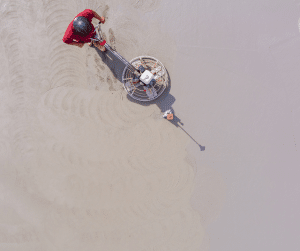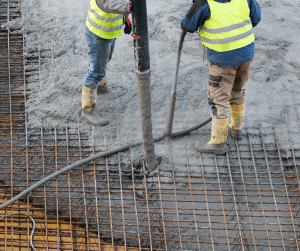How Long Does Screed Take to Dry
How Long Does Screed Take to Dry?
Everything You Need to Know

Understanding the drying time of the screed is essential for optimal flooring construction success. Whether you are building a home or a business, screed offers a flat, smooth foundation for the floor finish of your choice.
However, the type, thickness, and climatic conditions all affect how long a screed takes to dry. This blog post will discuss the various kinds of screeds and how long it will take them to dry completely.
Types of Screed and Their Drying Times
1. Fast-Drying Screed
Fast-drying screed is the ideal choice if you are short on time. This screed is ideal for tight project deadlines or when you need to install flooring as soon as possible because of its rapid setting and drying properties.
- Setting Time: 1–2 hours
- Drying Rate: 10–15 mm per day
2. Liquid Flow Screeds
Self-levelling screeds, often referred to as liquid flow screeds, are often used because of their quick application and smooth surface. Because of their liquid nature, these screeds are perfect for precise applications like underfloor heating systems, where exact coverage is possible.
- Setting Time: 6–48 hours
- Drying Rate: About 1 mm per day
3. Traditional Screeds
Traditional screeds are made from a mix of cement, water, and sharp sand. They are commonly used in a variety of flooring projects for their durability and relatively easy installation.
- Setting Time: 24–48 hours
- Drying Rate: Approximately 1 mm per day
4. Sand and Cement Floor Screeds
Cement and sand screeds are frequently utilised because of their durability and adaptability. They provide a stable, level foundation for additional installations like tiles or carpets, making them perfect for a variety of flooring options.
- Setting Time: 24–48 hours
- Drying Rate: 1 mm per day
5. Concrete Floor Screeds
Concrete floor screeds are frequently used in heavy-duty settings like warehouses or industrial floors where strength is a top concern. These screeds are more robust and can withstand heavy loads but require careful attention during the drying process.
- Setting Time: 12–28 hours
- Drying Rate: About 2 mm per day
Factors That Affect Screed Drying Times

While the type of screed plays a significant role in drying times, several other factors also come into play:
- Screed Thickness: The thicker the layer of screed, the longer it will take to dry. There is a particular rate of drying for each type of screed per millimetre of thickness as per above.
- Environmental Factors: Humidity, temperature, and ventilation can impact how quickly the screed dries. Cold or damp conditions can make drying times slower, while warm, well-ventilated spaces speed up the process.
- Flooring Type: Certain types of flooring, like tiles or hardwood, may need screed to be fully dry before installation, while others, such as carpets, may offer more flexibility.
How Long Should I Wait to Lay a Floor Over a Screed?
After screeding, the thickness of the screed and other elements like ventilation and environment affect how long it takes to install flooring. Waiting periods are typically one week for up to 4 cm of thickness, two weeks for each additional centimetre of thickness up to 6 cm, and four weeks for thicknesses more than 6 cm.
How to Measure Screed Moisture Content
To ensure the screed is ready for flooring, you can use an air hygrometer to measure the moisture level of the screed. This tool measures the amount of moisture released by the screed into a sealed area over a period of 72 hours. This process gives a reliable indication of whether the screed is sufficiently dry and ready for the next steps of the project.
Tips for Proper Screed Drying
- Follow Manufacturer Guidelines: The manufacturer’s specified drying instructions should always be followed. Ignoring these recommendations may cause longer drying periods or even cause the floor’s structural integrity to be compromised.
- Avoid Heavy Loads: Wait until the newly poured screed is completely dry before putting heavy furniture or machines on it. Even though certain screeds dry fast, if pressure is applied too soon, the high internal moisture content of the screed might be damaged.
- Proceed Carefully It is advisable to walk carefully over the screed when it is initially curing, particularly in the first several days. This keeps the surface flat and guards against fractures and indentations.
Expert Floor Screed Installation in the Midlands
The type, thickness, and climatic conditions when applying the screed, among other considerations, all affect how long it takes to dry. Get in touch with GM Floor Screeds for expert screed installation and advice.
For a strong, long-lasting floor finish, we can assist you in selecting the ideal screed for your job and make sure it is set and cured correctly. Contact us today for a quote FREE of charge.
